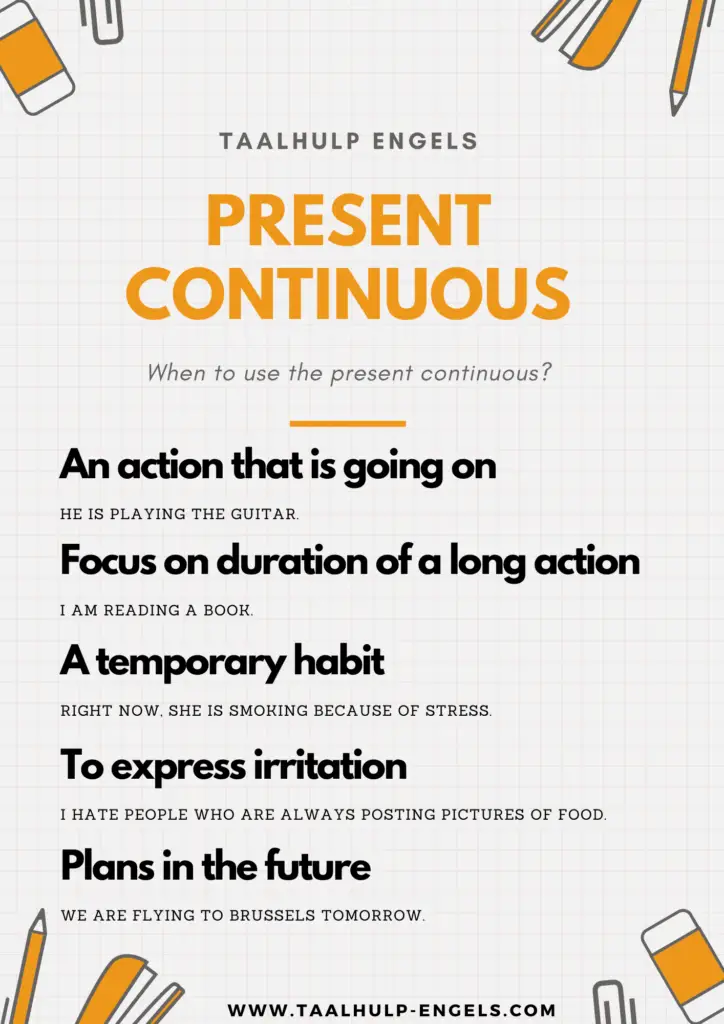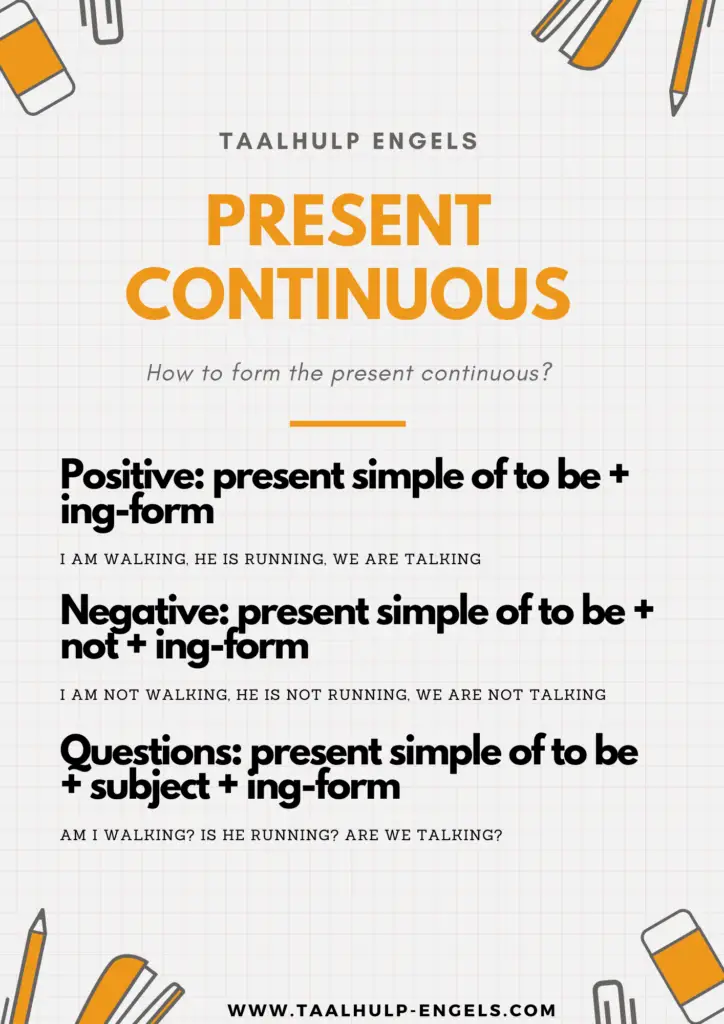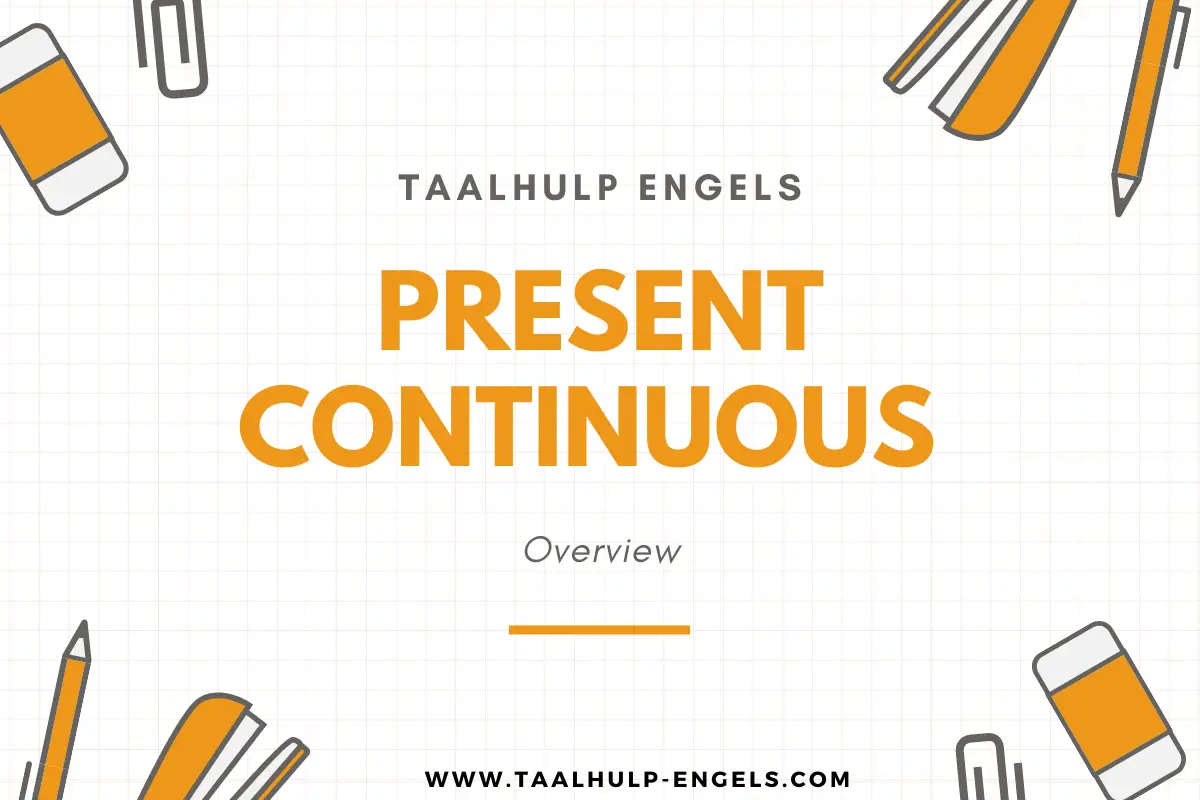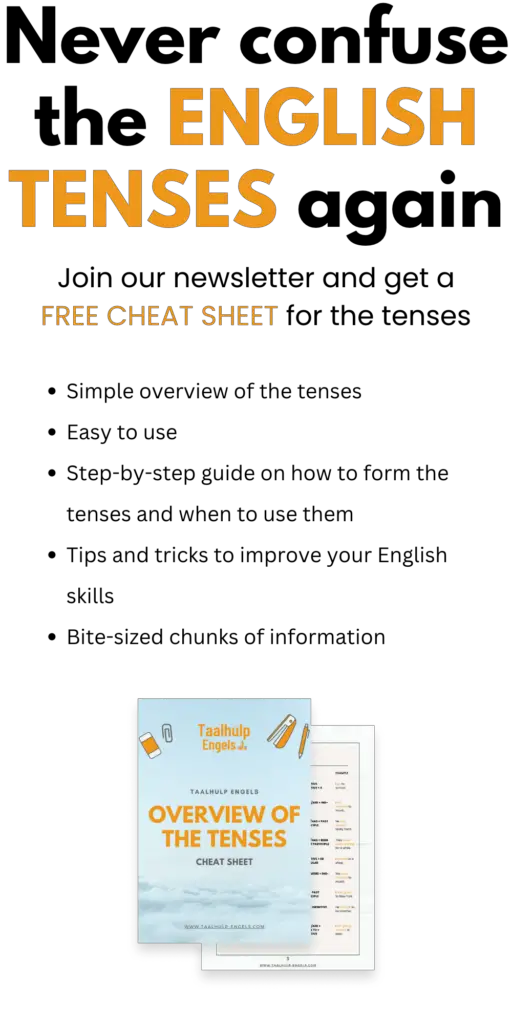The present continuous (or present progressive) is one of the tenses in English you can use to talk about the present. On this page, you have a clear overview of when you should use this tense and how you form it.
Present continuous (or present progressive) tense
You use this tense when you want to talk about an action that is going on in the present or when you want to stress the duration of an action. Below you can find an overview of different situations in which you use this tense.
An action that is going on
- He is playing the guitar.
A long action where the focus is on the duration of this action
- I am reading a book.
A temporary habit
- Right now, she is smoking a lot more because of stress at work.
A trend that appears more and more, or less and less
- More and more rich people are investing their money.

When you want to express irritation or anger about a repeated action. The speaker hates this action (words such as ‘always’ and ‘continuously’ are regularly used in this context)
- I hate people who are always posting pictures of their food on Instagram.
To talk about plans and arrangements for the future
- We are flying to Brussels tomorrow morning.

How to form the present continuous
Present continuous positive
To form the present continuous (or present progressive), you always need two parts. You need the present simple of ‘to be’ and you also need the ing-form of the main verb. You just add <ing> to the infinitive of the main verb.
If you want to make an affirmative sentence in the present continuous, you always need two parts: to be + ing-form of the main verb.
| I am walking |
| You are walking |
| He, she, it is walking |
| We are walking |
| You are walking |
| They are walking |
When the infinitive ends in <e>, you drop it and add <ing> to make the ing-form.
- To write: I am writing.

Present continuous negative
To form the present continuous negative, you use ‘not’ and put it after the auxiliary verb.
| I am not walking |
| You are not walking |
| He/she/it is not walking |
| We are not walking |
| You are not walking |
| They are not walking |
Present continuous questions
If you want to form a question in the present continuous, you conjugate the auxiliary ‘to be’, followed by the subject of the sentence and the ing-form of the main verb.
| Am I walking? |
| Are you walking? |
| Is he/she/it walking? |
| Are we walking? |
| Are you walking? |
| Are they walking? |
Time indicators present continuous
If you have one of these words in a sentence, it’s usually an indication that you are dealing with a present continuous.
- Now, at the moment
Examples
| Positive | Negative | Question |
| I am working He is singing | I am not working He is not singing | Am I working? Is he singing? |


Exercises about the present continuous
- Exercise 1
- Exercise 2
- Negative Exercise 1
- Negative Exercise 2
- Questions Exercise 1
- Questions Exercise 2
- Mixed Exercise 1
- Mixed Exercise 2
- Mixed Exercise 3
- Mixed Exercise 4
- Mixed Exercise 5
Related articles
- Present Simple
- Present Perfect
- Present Perfect Continuous
- Present Tenses Overview
- Future Tenses Overview


